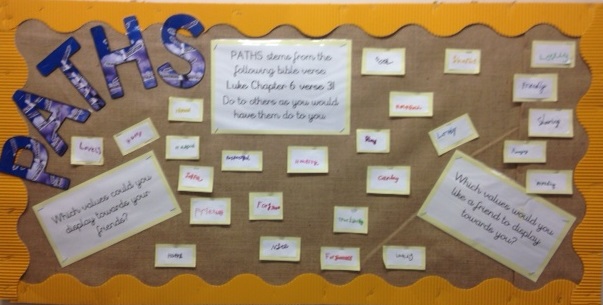PATHS
Promoting
Alternative
Thinking
Strategies
The entire PATHS curriculum, delivered in the UK by Barnados, comes from the following verse:
Do to others as you would have them do to you.
Luke 6:31
What is PATHS?
PATHS is a universal, evidenced based, PSHE Curriculum taught by teachers in the primary school. It focuses on teaching children improved thinking skills and responsible decision making, as well as helping children to achieve overall academic success.
It is usually delivered in weekly whole class sessions by the class teacher, backed up by smaller friendship groups, which offer targeted extra support in developing fundamental social skills.
Key Strategies
RULES
Children are taught the purpose and importance of rules, including the consequences to society of rule breaking.
COMPLIMENTS
Children are taught what a compliment is, why they should pay compliments, how to pay and receive compliments and how they make people feel.
Pupil of the day concept introduces regular complimenting within the classroom. We even do a staff member of the day, so that everyone in school gets the opportunity to give and receive compliments.
CALMING DOWN AND SELF-CONTROL
Children are taught a variety of calming down techniques including 'Doing Turtle' and using the Control Signals poster.
FEELINGS
Children are taught that all feelings are OK, but that behaviours are OK and NOT OK. Through feelings lessons and the use of Feelings Cards and dictionaries, children develop a better understanding of how to label and recognise their own emotions and those of others.
MANNER AND FAIR PLAY
Lessons teach children the importance of manners and fair play.
PROBLEM SOLVING
Children learn how to identify and deal with any problems that they might face. Progression through the year groups enables children to work up to using an 11=step problem-solving technique.

